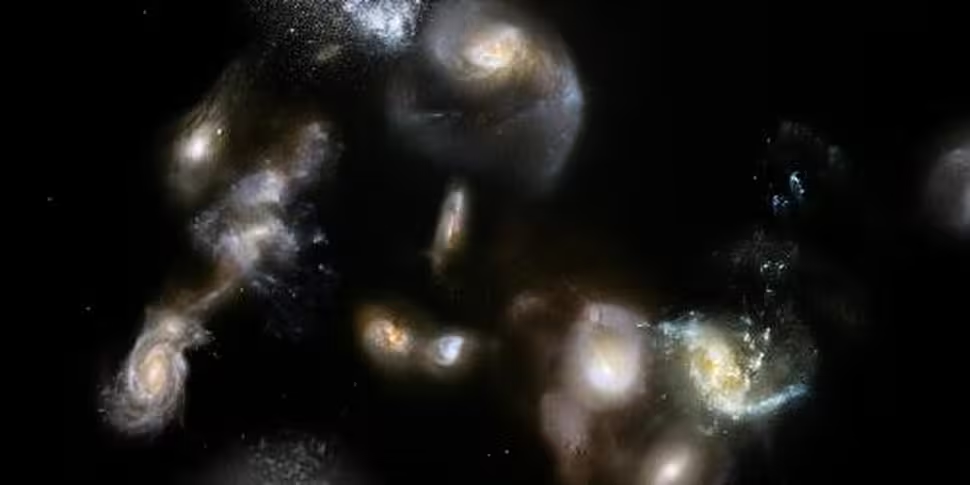Two telescopes have discovered the beginning of a series of cosmic pile-ups: the impending collision of young galaxies.
The ALMA and APEX telescopes in Chile have peered deep into space.
Astronomers thought that these events occurred around three billion years after the Big Bang, so they were surprised when new observations revealed them happening when the universe was only half that age.
These ancient systems of galaxies are thought to be building massive structures of galaxy clusters.
Two international teams of scientists - led by Tim Miller, from Dalhousie University in Canada and Yale University in the US, and Iván Oteo, from the University of Edinburgh - have uncovered "startlingly dense concentrations" of galaxies that are set to merge, forming the cores of what will eventually become colossal galaxy clusters.
The Miller team looked at a galaxy protocluster named SPT2349-56. The light from this began travelling to Earth when the universe was about one-tenth of its current age.
The individual galaxies in this cosmic pileup are starburst galaxies - and the concentration in such a compact region makes this the most active region ever observed in the universe.
"Thousands of stars are born there every year, compared to just one in our own Milky Way", researchers say.
The Oteo team found a similar mega-merger, formed by 10 dusty star-forming galaxies, nicknamed a 'dusty red core' because of its red colour.
This montage shows three views of a distant group of interacting and merging galaxies in the early universe | Image: ESO/ALMA (ESO/NAOJ/NRAO)/Miller et al
Iván Oteo explains why these objects are so unexpected.
"The lifetime of dusty starbursts is thought to be relatively short, because they consume their gas at an extraordinary rate.
"At any time, in any corner of the universe, these galaxies are usually in the minority.
"So, finding numerous dusty starbursts shining at the same time like this is very puzzling, and something that we still need to understand."
These forming galaxy clusters were first spotted as faint smudges of light, using the South Pole Telescope and the Herschel Space Observatory.
The subsequent ALMA and APEX observations showed they had an unusual structure, and confirmed their light originated much earlier than expected.
"These discoveries by ALMA are only the tip of the iceberg", says ESO astronomer Carlos De Breuck.
"Additional observations with the APEX telescope show that the real number of star-forming galaxies is likely even three times higher.
"Ongoing observations with the MUSE instrument on ESO’s VLT are also identifying additional galaxies", he adds.
Current theoretical and computer models suggest protoclusters as massive as these should have taken much longer to evolve.










